Search
Total 39 results were found for your query amphibian.
-
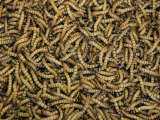 Zoology
ZoologyMealworm: Characteristics, Lifecycle, Farm Setup, and Nutrient Benefits
... protein content and digestibility. They can be fed to a wide range of animals, including chickens, ducks, geese, fish, and even exotic pets like reptiles and amphibians. Mealworms can be offered live, ...Created on 23 April 2024 -
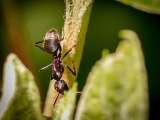 Zoology
ZoologyTissues and Supporting Systems
... organs of gaseous exchange among the air-breathing land vertebrates. The surface area of the lungs is increased by alveoli which are highly vascularised. In amphibians, the skin and buccal cavity form ...Created on 08 January 2023 -
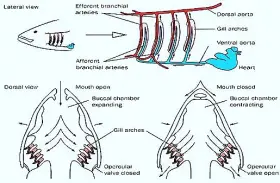 Zoology
ZoologyCOMPARATIVE ANATOMY: RESPIRATORY ORGANS OF FISH (SCOLIODON) AND FROG (RANA)
Scoliodon (fish) is a poikilothermic cartilaginous fish. It is commonly known as shark. Rana (frog) is an amphibian and poikilothermic animal. It is commonly called as frog. Living cells require ...Created on 09 July 2017 -
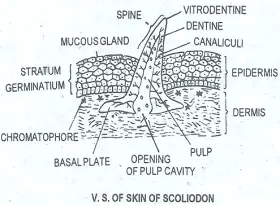 Zoology
ZoologyCOMPARATIVE ANATOMY: INTEGUMENT IN SCOLIODON AND RANA
... and on land-amphibian. In both the vertebrates the skin (integument) is the outermost covering of the body. It is multicellular and multilayered structure typically formed of an outer layer of 'epidermis' ...Created on 08 July 2017 -
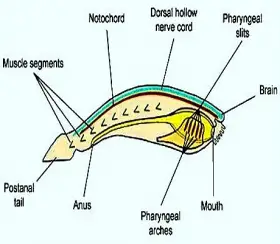 Zoology
ZoologyBIOLOGY OF CHORDATES
... in this phylum. The vertebrates are fishes, amphibians, reptiles, birds and mammals. All these animals appear to be quite different from each other .However all of them possess certain common characters. ...Created on 04 July 2017 -
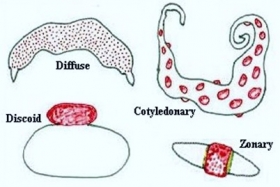 Zoology
ZoologyPLACENTA IN MAMMALS: STRUCTURE, TYPES AND FUNCTIONS
In Eutherian mammals the embryo develops in the uterus of mother. The developing embryo will get nourishment from mother through the placenta. Placenta is not common to all mammals. It is developed well ...Created on 03 July 2017 -
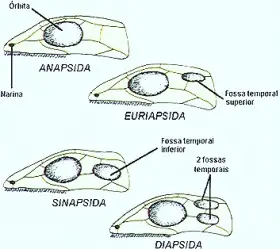 Zoology
ZoologyCLASSIFICATION OF REPTILES
... In these Reptiles Jaws and teeth are poorly developed. These Reptiles resemble with Labyrinthodont Amphibians. They became extinct in the triassic period of Mesozoic era. Ex: Seymauria ...Created on 30 June 2017 -
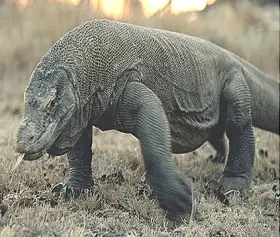 Zoology
ZoologyGENERAL CHARACTERS OF REPTILES
AN INTRODUCTION TO REPTILES In the carboniferous period of palaeozoic era “Reptiles” arose from Labyrinthodont Amphibians. In the Mesozoic era “Reptiles” dominated the entire world and that era is ...Created on 30 June 2017 -
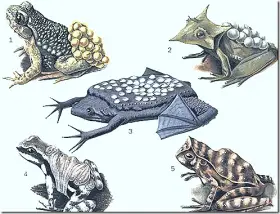 Zoology
ZoologyPARENTAL CARE IN THE MEMBERS OF CLASS AMPHIBIA
Amphibian include anurans, urodelans and apodans. In all these groups of amphibians we come across with a great deal of parental care. Amphibians show several mechanisms to protect their eggs and developing ...Created on 30 June 2017 -
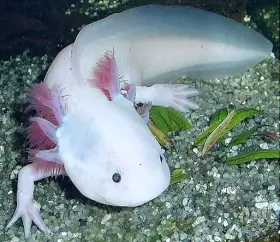 Zoology
ZoologyPAEDOGENSIS OR NEOTENY IN AMPHIBIANS
Neoteny is defined as the failure or delay of larva to metamorphose while becoming sexually mature. It is character of some amphibians. The best example is axolotl larva of Amblystoma. It is aquatic. ...Created on 30 June 2017 -
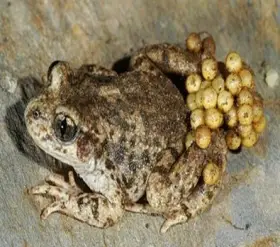 Zoology
ZoologyCLASSIFICATION OF AMPHIBIA
Based on characters of amphibians the present day (extant) amphibians are classified Into 3 orders. Order 1. Anura - (Frogs and Toads) Order 2. Urodela - (Salamanders) Order 3. Apoda - (Limbless ...Created on 30 June 2017 -
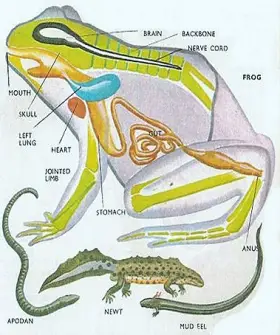 Zoology
ZoologyGENERAL CHARACTERS OF AMPHIBIA
Amphibians are cold blooded vertebrates. In the Devonian period of palaeozoic era they were originated from fishes, in the carboniferous period, they increased their number, hence that period is called ...Created on 30 June 2017 -
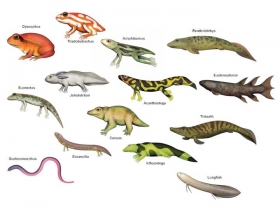 Zoology
ZoologyAN INTRODUCTION TO AMPHIBIANS
Amphibians are the earliest tetrapods. They were descended from fish like ancestors. They were developed in the Devonian period. They flourished during carboniferous period. It is called “Age of Amphibians”. ...Created on 30 June 2017 -
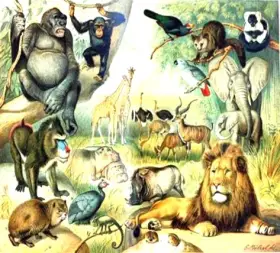 Zoology
ZoologyZOOGEOGRAPHY: ETHIOPIAN REGION
... are common in this region. Amphibians in Ethiopian Regions: This fauna is distinctive, It is represented by Cicaelians, Anura. Rhacophorus, Hyla, Microhyla, Xenopus (Clawed Toad). ...Created on 12 June 2017 -
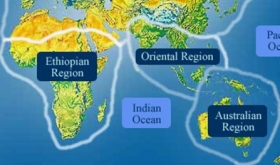 Zoology
ZoologyZOOGEOGRAPHY: ORIENTAL REGION
... resemble that of Ethiopian region. Oriental fish fauna is dominated by Carps and Cat fishes. Notopteridae Anabantklae Syngnathus Cypsilurusetc Amphibians in Oriental Region: Tailed ...Created on 12 June 2017 -
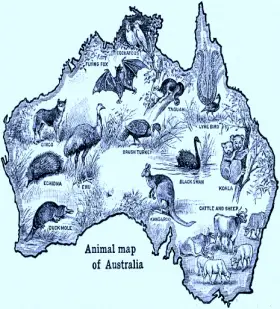 Zoology
ZoologyZOOGEOGRAPHY: AUSTRALIAN REGION
... climate. In this subregion 34 genera of marsupials included. Hence it is called “Home of Marsupials”. Tailed Amphibians ar-reported in this region. Flightless birds like Emus are included in ...Created on 12 June 2017 -
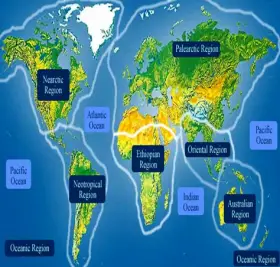 Zoology
ZoologyZOOGEOGRAPHY: NEOTROPICAL REGION
... South American Fresh water Lung fish. Amphibians in Neotropical region: In this zone 14 families of Amphibians are present 1) Pipa pipa 2) Hyla 3) Bufo 4) Rana etc. Caecelians are also represented ...Created on 12 June 2017 -
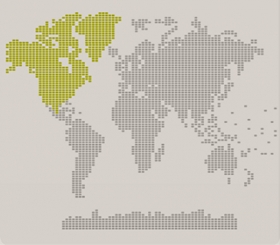 Zoology
ZoologyZOOGEOGRAPHY: NEARCTIC REGION
... America and Greenland. Bison, Gluttons, Polar bears, arctic fox, Reindeer are commonly seen. Fauna: Nearctic region includes Fishes, Amphibians, Reptiles, Birds and Mammales. Fishes: ...Created on 12 June 2017 -
 Zoology
ZoologyZOOGEOGRAPHY: PALAEARCTIC REGION
... 85 families of vertebrates. Amphibians and Reptiles are represented with six families each. Myogale, only one genus of mammal is present. Bird like Tits, wagtails, mammals like wolf and moles are common ...Created on 12 June 2017 -
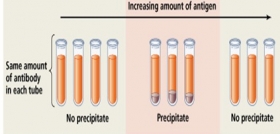 Zoology
ZoologyPHYSIOLOGICAL EVIDENCES OF ORGANIC EVOLUTION
... product of fishes. B. Example-Il: Birds embryo first ‘4’ days excretes ammonia like fishes, then nine days excretes urea like amphibians and finally excretes uric acid like reptiles and birds. ...Created on 10 June 2017